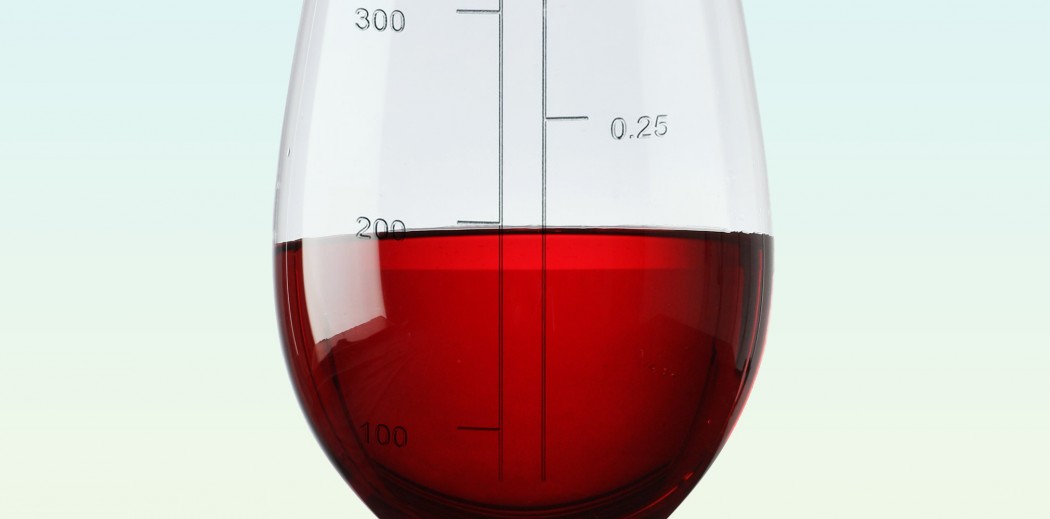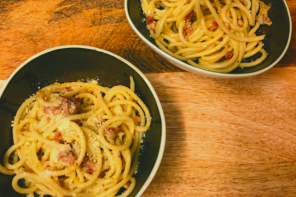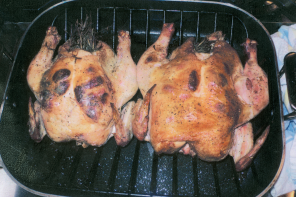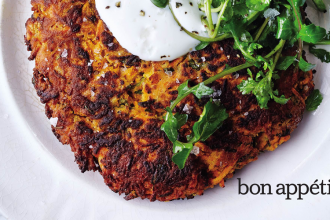There is no limit to how much wine you can pour in your glass, figuratively speaking. But now say you’re hosting a party and you want to know when to stop filling your guests’ glasses? You don’t want to seem stingy with a small pour. But you also don’t want to seem overzealous with too much. Which brings us to a befuddling question: What’s the “standard” pour?
Though the wine industry is filled with regulations across the globe, there is no set value for the amount of wine that should be served in a glass. While it’s frustrating to go to a restaurant and get a skimpy pour, it’s up to the establishment’s discretion and a server’s pouring consistency (and generosity). But the rule-of-thumb “standard” pour for restaurants is 5 oz for red, white or Champagne.
Some restaurants may do closer to 5 oz, some closer to 6 oz. The standard 750 ml bottle of wine is equal to 25ish oz. So if we go back to elementary division tests, you’ve got five (5 oz) glasses per bottle of wine. You can see why a restaurant might choose to serve 5 oz pours instead of only getting 4 glasses at 6 oz. Cha-ching. Of course, some restaurants are more generous, but with so many different glass styles, it’s hard to tell as a customer how much wine is in your glass.
The 5 oz pour also makes sense for other reasons: wine has a higher ABV, so restaurants are limiting your alcohol intake, and there is plenty of room for breathing in and aerating your wine. Plus, the health industry recommends drinking in moderation, and for wine, this means one 5 oz serving per day for women, two for men. Many studies have pointed to the benefits of a nightly 5 oz glass of red wine in producing heart health. And some studies say the benefits aren’t solely the product of reds, but whites too!
The European Code of Cancer defines a standard drink of red wine as 100 to 120 ml, which is only about 3.4 to 4 oz! The organization warns that some restaurants and bars serve more than the standard (but we’re certainly not complaining).
Of course Port or Sherry wines will probably be closer to 3 to 4 oz pours because they are fortified wines with higher alcohol content. Dessert wines will be an even smaller pour because of the alcohol content and sweetness.
When it comes to wine tasting, there are many wines either being tasted and spit out or tasted and downed. So whether wasted wine or getting wasted, it makes sense that the pour be less than your normal glass of wine. The standard tasting pour is 2 oz. At 2 to 3 oz, you can get 10 tasting glasses out of a 750 ml bottle.
Whether you’re having your own party or tasting, these standard pours are good rules-of-thumb to live by. And besides, you can always pour yourself another drink.









Great piece! Enjoy New York!… Eat some meataballs for now….you’ll get your cheese curds soon 🙂
I enjoyed the discussion regarding the size of the pours. In my local area (Phoenix) the actual pour seems to be in the hands of the restaurant or bar. With variations. The places with more homey atmosphere seem to have less control on the bartenders that the uptight restaurants. Thats not the whole picture I know but at times you try and cast around for a reason for a difference than what was poured last time.